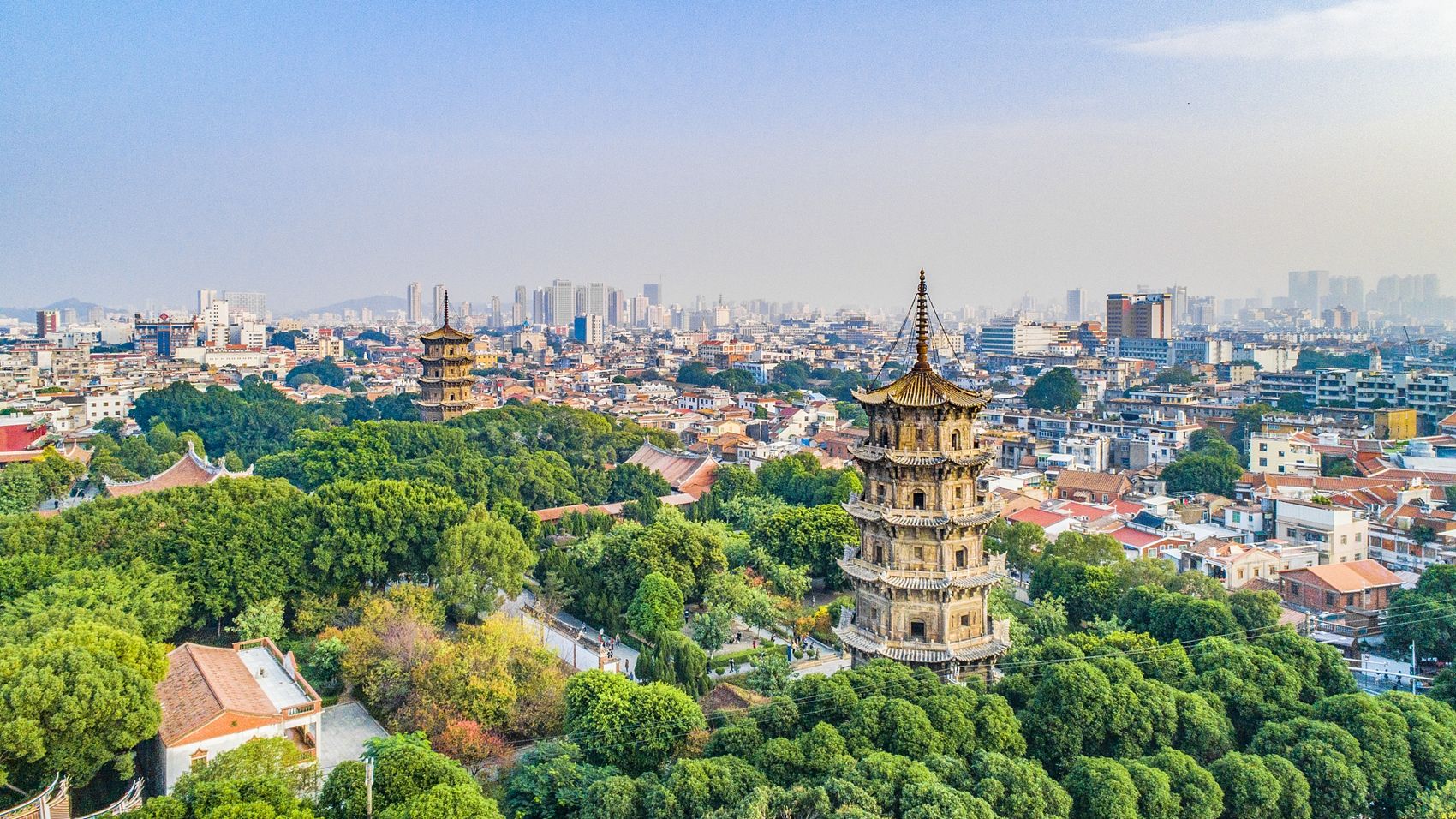Quanzhou, on China’s southeast coast, is a 1,000-year-old city known as the “First Port of the East.” Its inclusion on the UNESCO World Heritage List in 2021 made Quanzhou a globally recognized cultural treasure. As the starting point of the ancient Maritime Silk Road, this region not only has a rich and diverse history, but also witnesses exchanges and integration between civilizations.
Quanzhou World Heritage Sites include Kaiyuan Temple, Luoyang Bridge, Qingjing Mosque, Tianhou Temple, Deji Gate Site, Inscriptions for Praying for Wind on Mount Jiuri, and Cai Family Ancestral Houses .
In this ancient city, you can wander through well-preserved alleys to experience the prosperity of the Song and Yuan dynasties, visit unique religious buildings to learn about the harmonious coexistence of various faiths, and taste authentic Minnan cuisine to savor the city’s cultural heritage.

Quanzhou: the first port in the East and its role in the maritime silk route
Quanzhou, located in Fujian province on the southeast coast of China, is a city with a fascinating history dating back more than a thousand years. Historically known as the “First Port of the East”, it was a crucial point on the ancient Maritime Silk Road, serving as a vital center for trade and cultural exchange between Asia, the Middle East and Europe.
The city reached its peak during the Song (960-1279) and Yuan (1271-1368) dynasties, when it became one of the most important ports in the world. Merchants from all over the world came to Quanzhou, bringing with them not only goods but also diverse ideas, beliefs, and cultures. This mix of influences can still be seen today in the city’s architecture, religions and culinary traditions.
Scallion Pancakes: crispy delicacies from Chinese and Taiwanese cuisine
World Heritage Sites
In 2021, Quanzhou was included in the UNESCO World Heritage List, recognizing its historical and cultural importance. Featured sites include:
- Kaiyuan Temple: Founded in 686, it is one of the oldest and largest Buddhist temples in China. The temple is famous for its twin pagodas and exquisite architecture.
- Puente Luoyang– Built during the Song Dynasty, this stone bridge is one of the oldest bridges in the country and an impressive example of ancient engineering.
- Mezquita Qingjing: Built in 1009, it is one of the oldest Islamic mosques in China, reflecting the presence and influence of Arab merchants in Quanzhou.
- Templo Tianhou: Dedicated to Mazu, the goddess of the sea, this temple is an important site of worship for sailors and fishermen.
- Deji Gate Site– Remains of an ancient city gate showing the fortification and military architecture of Quanzhou.
- Registration to Pray for the Wind on Mount Jiuri– Antique engravings documenting sailors’ prayers for safe voyages, offering a unique insight into the maritime beliefs and practices of the time.
- Ancestral Houses of the Cai Family: Well-preserved examples of the region’s traditional residential architecture.
Quanzhou is a melting pot of cultures and religions. In its streets and markets, you can see the coexistence of Buddhist temples, mosques, Christian churches and Taoist temples. This religious diversity is a testament to the spirit of tolerance and harmony that has characterized the city over the centuries.
The region offers an enriching experience for visitors. Wandering its historic alleys, exploring its ancient temples and bridges, and enjoying its varied cuisine are just some of the ways you can experience the city’s rich cultural heritage.
Exploring Quanzhou is like traveling through time, discovering the stories of the merchants and travelers who left their mark on this vibrant and history-filled city. Its inclusion on the UNESCO World Heritage List not only highlights its historical importance but also ensures that its cultural treasures are preserved for future generations.




